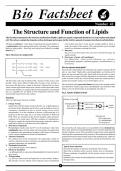Bio 184 Ferns Notes
Early vascular plants
Lacked roots and leaves
Short i.e. ~15cm
Called polysporangiates because they had more than one sporangium
Tracheophytes – have tracheids
Tracheids – expanded lengthwise when young
Then developed thick secondary cell walls
Produced burst of extremely tough polymer called lignin just before death
Helped spreading more spores and prevent desiccation
Vascular Bundle (bundle of transport fibres) – occurred in central strand
Provided one solution to these problems
Only have primary growth
All these cells are derived from primary growing point or meristem of plant
Secondary meristem evolved that produce rings of tracheids known as ‘wood’
Similar polysporangiate plant fossils – recently found in New Brunswick
400 million years ago
Sporophytes became dominant to and separate from gametophytes
In mosses – gametophytes were dominant
In mosses – sporophyte was nutritionally dependent on gametophyte
450 million years ago
Fungi were tallest organisms on the planet
Fungi had successfully established themselves on land before plants
Broke down rock to liberate minerals and form soils
Initial relationship with plants was parasitic
Co-evolution occurred resulting in a symbiosis
E.g. Rhynia sporophytic cells contained fungal hyphae
Mycorrhizas developed
- i.e. symbiotic relationships with plants
- Fungus supplied nutrients, water and defenses to plant in exchange for
sugars
Example of early vascular plant
Sporophyte – Algaophyton major
Gametophyte – Lyonophyton rhyniensis
Two engineering problems of early plants
1. Spreading spores
hardened cells provided structural support
Allowed greater height and size
Taller plants dispersed spores further
Larger plants had more sporangia and spores
Overall, fitness increased
Early vascular plants
Lacked roots and leaves
Short i.e. ~15cm
Called polysporangiates because they had more than one sporangium
Tracheophytes – have tracheids
Tracheids – expanded lengthwise when young
Then developed thick secondary cell walls
Produced burst of extremely tough polymer called lignin just before death
Helped spreading more spores and prevent desiccation
Vascular Bundle (bundle of transport fibres) – occurred in central strand
Provided one solution to these problems
Only have primary growth
All these cells are derived from primary growing point or meristem of plant
Secondary meristem evolved that produce rings of tracheids known as ‘wood’
Similar polysporangiate plant fossils – recently found in New Brunswick
400 million years ago
Sporophytes became dominant to and separate from gametophytes
In mosses – gametophytes were dominant
In mosses – sporophyte was nutritionally dependent on gametophyte
450 million years ago
Fungi were tallest organisms on the planet
Fungi had successfully established themselves on land before plants
Broke down rock to liberate minerals and form soils
Initial relationship with plants was parasitic
Co-evolution occurred resulting in a symbiosis
E.g. Rhynia sporophytic cells contained fungal hyphae
Mycorrhizas developed
- i.e. symbiotic relationships with plants
- Fungus supplied nutrients, water and defenses to plant in exchange for
sugars
Example of early vascular plant
Sporophyte – Algaophyton major
Gametophyte – Lyonophyton rhyniensis
Two engineering problems of early plants
1. Spreading spores
hardened cells provided structural support
Allowed greater height and size
Taller plants dispersed spores further
Larger plants had more sporangia and spores
Overall, fitness increased










